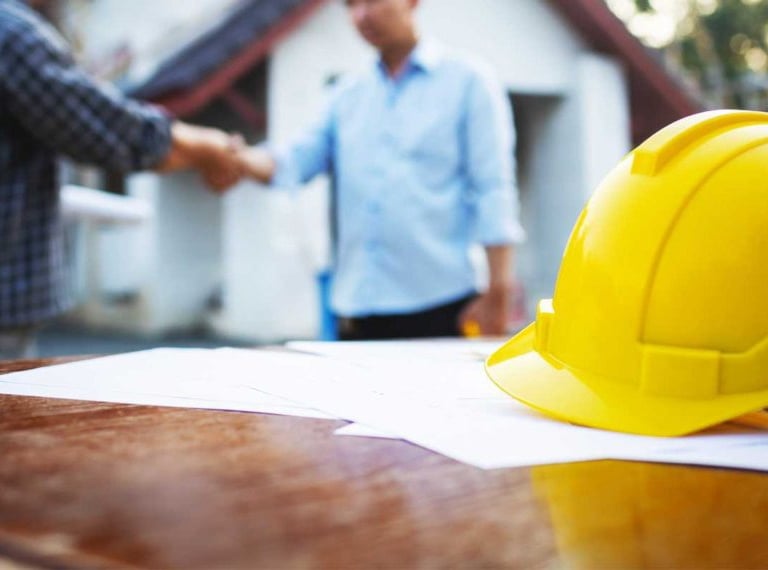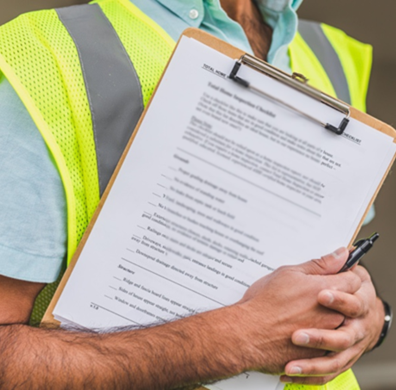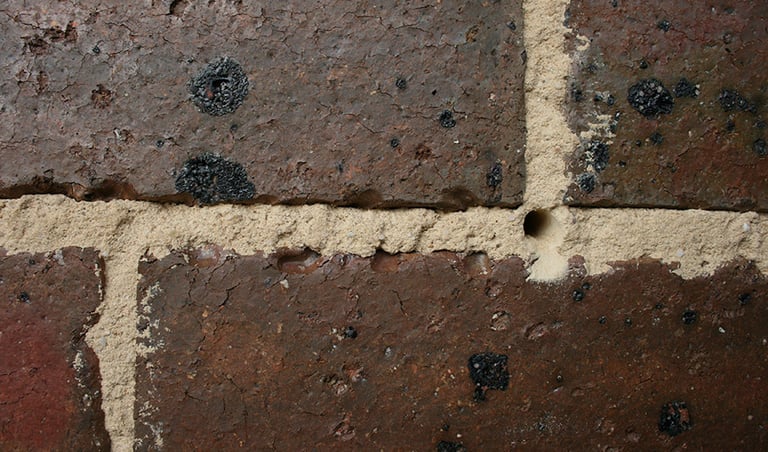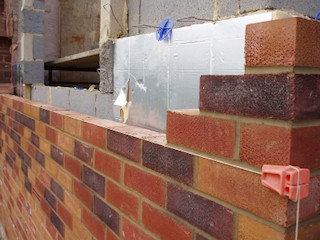We’re seeing an increasing number of mortar and brickwork defects in new residential builds, often linked to poor workmanship, incorrect mix ratios, or aggressive cleaning practices. Left unchecked, these problems create costly defects and disputes that can undermine a builder’s reputation.
As licensed builders with extensive remedial experience, we understand the critical role mortar plays in compliance and durability. By engaging us mid-build, you reduce risk and demonstrate proactive quality management. Where issues arise post-handover, our independent reports and recommendations provide the evidence required to address warranty, insurer, or legal queries.
With Probrik, you gain a partner who delivers independent testing, unbiased reporting, and if needed, remedial solutions — all carried out in line with industry standards and Australian regulations.
Scratch Test (Durability Assessment)
The scratch test is a recognised in-situ durability assessment under AS 3700 (Masonry Structures). It provides a quantified measure of mortar surface hardness that can be benchmarked against the indicative durability requirements set out in the Standard.
Unlike the misconception that it involves casually scratching mortar to see if it crumbles, the correct method requires a calibrated instrument that applies controlled force to the mortar joint. This produces a repeatable hardness index that can be referenced against industry expectations and used to assess whether mortar durability appears consistent with AS 3700 provisions.
Scratch testing is most effective when carried out:
During construction (mid-build) — as part of QA/QC processes, enabling early detection of potential issues before handover.
Post-handover within the 12-month warranty period — to confirm mortar durability where concerns are raised by homeowners, builders, or warranty providers.
In certain cases beyond 12 months — where indicative data is required to assist in assessing mortar performance.
While scratch testing is most commonly used during construction and within the 12-month warranty period, it can also provide useful indicative data beyond this timeframe.
In older builds, or where remediation has already occurred, results should be considered in the context of natural weathering and carbonation, which can influence surface hardness. In such cases, scratch testing is best used alongside other investigative methods, rather than as a standalone measure.
At Probrik, every scratch test is followed by a comprehensive, builder-backed report. Our reports present the test data clearly and factually, then provide professional recommendations based on more than a decade of remedial building experience. This ensures you receive objective, unbiased results, supported by actionable guidance tailored to your project.
Scratch testing also assists builders in meeting their QA obligations under the NCC (BCA) by providing documented, in-situ evidence of mortar durability.
It is important to note that while the scratch test provides a recognised measure of surface durability, it does not assess mortar composition — for that, laboratory chemical analysis is required. Results also reflect only the joints tested and may not represent all areas of a structure.
Laboratory / Chemical Analysis (Confirmatory Testing)
When greater certainty is required — particularly in warranty claims, dispute resolution, or tribunal proceedings — Probrik arranges independent laboratory chemical analysis of mortar samples through accredited facilities.
Our role is to carefully collect and document samples on site (often taken with part of the surrounding brick) and ensure they are handled correctly for testing. The analysis itself is performed by an independent, accredited laboratory, which chemically breaks down the sample to determine:
The proportions of cement, lime, and sand.
The presence of admixtures or additives such as plasticisers or waterproofing agents.
Possible contaminants, including acid cleaning residues.
Once the laboratory has provided its results, Probrik incorporates the findings into a comprehensive, builder-backed report. This report presents the data clearly and factually, followed by professional recommendations grounded in our experience with brick and mortar remediation. The outcome is an unbiased, defensible document that builders can rely on when engaging with warranty providers, insurers, or regulatory bodies.
When Chemical Analysis is Used
Confirmatory testing where durability concerns remain after scratch testing.
Warranty and defect disputes, to provide factual evidence of mortar composition.
Tribunal or insurer reviews, where independent verification is required.
Heritage and conservation projects, where mortar compatibility and historical accuracy are critical.
Quality assurance during construction, where fresh mortar samples may be submitted proactively.
Because chemical analysis is invasive, destructive, and more costly than scratch testing, it is treated as a confirmatory or last-resort option, rather than a routine first step. Its value lies in providing clear, unbiased evidence against the requirements of AS 3700 (Masonry Structures) and AS 2701 (Mortar Testing).
Independent & Unbiased Process
All chemical testing is carried out by an independent, accredited laboratory. Probrik’s role is to sample collection, reporting, and professional recommendations. This ensures that the testing process remains objective and unbiased, even if Probrik is later engaged to carry out remedial works.
Important Information & Disclaimer
Laboratory analysis is performed by independent, accredited facilities. Probrik does not conduct the chemical analysis itself.
Results apply only to the samples tested and may not represent all joints in a structure.
Testing outcomes do not certify overall compliance with the NCC or guarantee long-term structural adequacy.
Reports are prepared for the commissioning client only and should not be relied upon by third parties without prior written consent.
Acceptance of results by warranty providers, certifiers, insurers, or tribunals cannot be guaranteed. Independent legal or engineering advice should be obtained where required.














